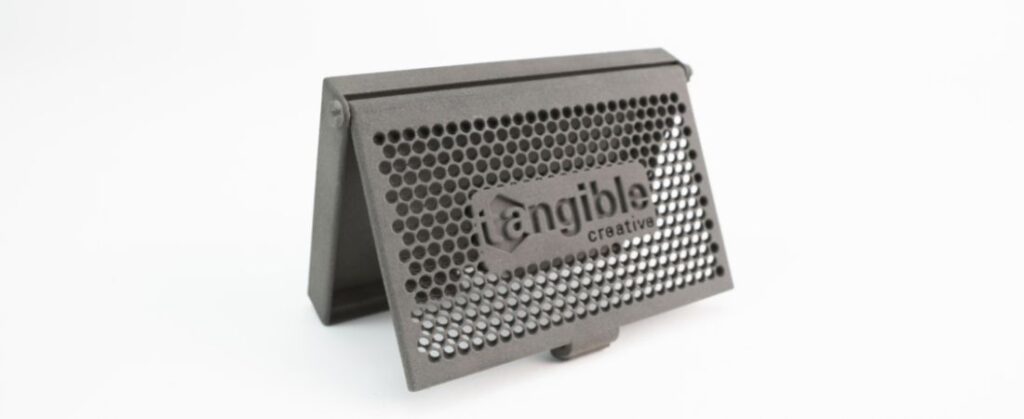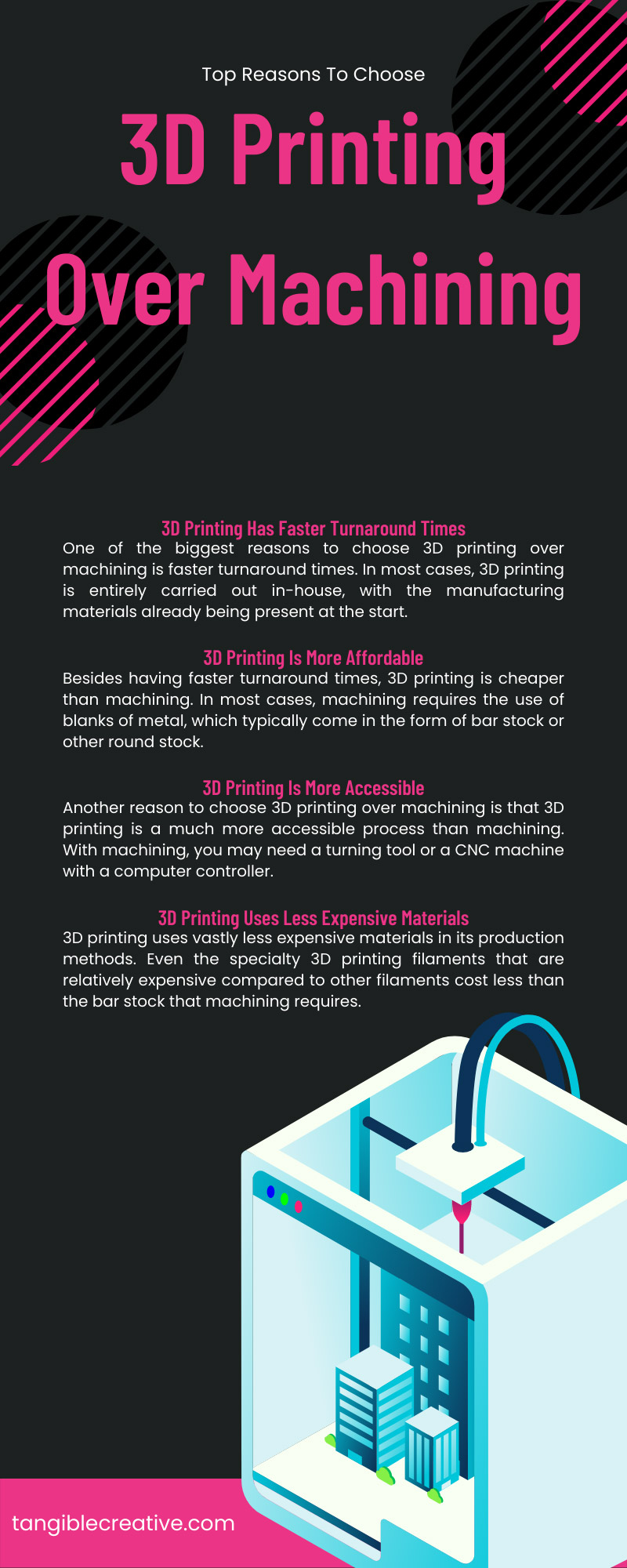
When looking at the top methods of manufacturing small production runs of items, the discussion of 3D printing versus machining always crops up. These two methods of fabrication are remarkably similar in how they can accurately and efficiently manufacture parts in a short time than traditional production methods. However, while both methods are extremely efficient in their production, they do both have their benefits and drawbacks that differentiate them. Read on to learn about some of the top reasons that you should choose 3D printing manufacturing over machining.
3D Printing Has Faster Turnaround Times
One of the biggest reasons to choose 3D printing over machining is faster turnaround times. In most cases, 3D printing is entirely carried out in-house, with the manufacturing materials already being present at the start. This, coupled with the fact that most 3D printing processes can occur in one room with a single operator, means that it takes less labor to utilize this manufacturing method.
Moreover, 3D printing often uses an FDM or fused deposition modeling style of manufacturing. With FDM printing, the turnaround time lessens by extreme amounts due to the ease of production that this type of manufacturing provides. Despite the shortened production times, you can still create strong, flexible plastic parts that stand the test of time.
3D Printing Is More Affordable
Besides having faster turnaround times, 3D printing is cheaper than machining. In most cases, machining requires the use of blanks of metal, which typically come in the form of bar stock or other round stock. While this may seem like a basic part of production, comparing the cost of manufacturing these types of blanks to the cost of 3D printing filament reveals major price differences.
Besides this, the 3D printing machines that use FDM filaments are often much cheaper than the other options in the machining process. While this lower cost may be the case, it is worth factoring in the fact that some machining will often produce higher quality parts with better finishes than lower quality FDM printing—however, there are multiple tiers of quality that a 3D printer can produce. For example, SLA and SLA 3D printing can create conjoined parts and precise dimensions in a way that machining cannot.
It’s crucial for any business to weigh the money saved against the quality expectations of their customers to determine which option is the best fit for their product.
3D Printing Is More Accessible
Another reason to choose 3D printing over machining is that 3D printing is a much more accessible process than machining. With machining, you may need a turning tool or a CNC machine with a computer controller. Compared this with 3D printing, which only necessitates the use of the 3D printer, and you’ll start to see how much easier and simpler the process is with approachable technology.
Machining takes a lot of skill and time to develop the knowledge necessary to accurately machine parts and products. In fact, many companies rely on experts whose entire career focuses on operating machining tools, meaning it may not be the best solution for those new to production. 3D printing also requires some knowledge and time to perfect, but this technology is comparatively easy to learn and teach to others. A more accessible manufacturing process provides businesses the opportunity to empower more workers to operate the equipment and expedite the manufacturing process.
3D Printing Uses Less Expensive Materials
3D printing uses vastly less expensive materials in its production methods. Even the specialty 3D printing filaments that are relatively expensive compared to other filaments cost less than the bar stock that machining requires. But beyond this, when you consider the overall cost of 3D printing when compared to machining, the cost of the overall 3D printing process is significantly less as well. 3D printing requires fewer tools, less space, and less expensive materials to use, meaning that even when compared with the cheapest machining methods, this process is still cost-effective. It may be worth it to consider using such specialty filaments to help broaden your manufacturing capabilities.
Machining Requires a Lot of Space
One factor that many may not consider when deciding between machining and 3D printing is the amount of space that each process necessitates. In reality, 3D printing requires only space the size of a 3D printer, which may be as little as a square foot. Compare this to turning machines and CNC machines, which may take up the space of an entire room, and you will start to see where the benefits of machining end and the drawbacks begin.
If you are in a smaller shop and are still deciding between these two manufacturing methods, it might be the best choice to go with 3D printing. After all, what’s the point of having a machining shop if you don’t even have enough space to work adequately? Opting for 3D printers on racks allows you to minimize floor usage while maximizing production output.
Machining Can Be Dangerous
One of the biggest drawbacks of machining is that it’s dangerous. Machining requires the use of many different types of machines to adequately form materials to your liking. These machines often have a lot of small and spinning parts, which may easily injure or harm those with less experience. In fact, some machines, such as turning machines, have caused fatalities in the workplace. As such, choosing a form of 3D printing, such as SLS 3D printing or something similar, allows you to create a safer workplace for you and your production team.
There are many reasons to choose 3D printing over machining for your business’s production process. While these two manufacturing methods may seem similar on the surface, they are two very different methods that come with their own unique benefits and drawbacks.
For smaller businesses seeking to build their manufacturing portfolio or those looking to quickly craft unique, cost-effective products, 3D printing may be the best option. This manufacturing process is easy to learn about and especially handy in most manufacturing fields. 3D printed objects are also becoming a trendy option across a variety of industries, offering your business an opportunity to reach new target audiences with time. As you craft your future business plans, consider the advantages that this emerging technology can lend to your products.

